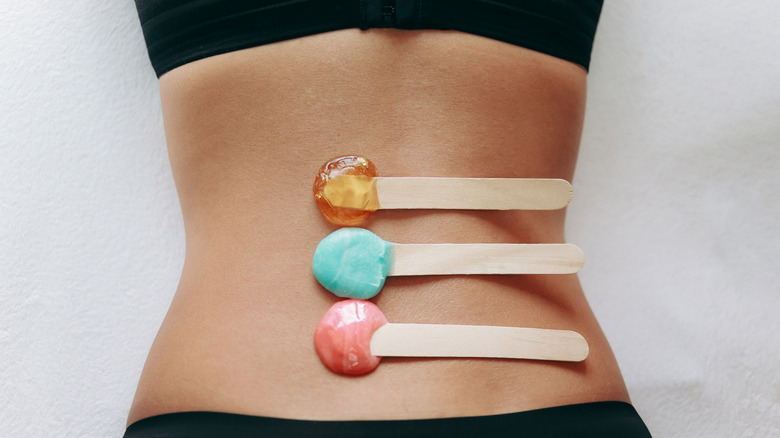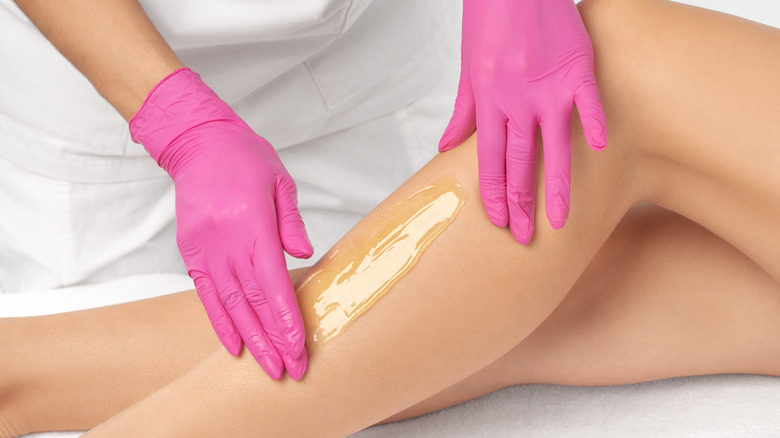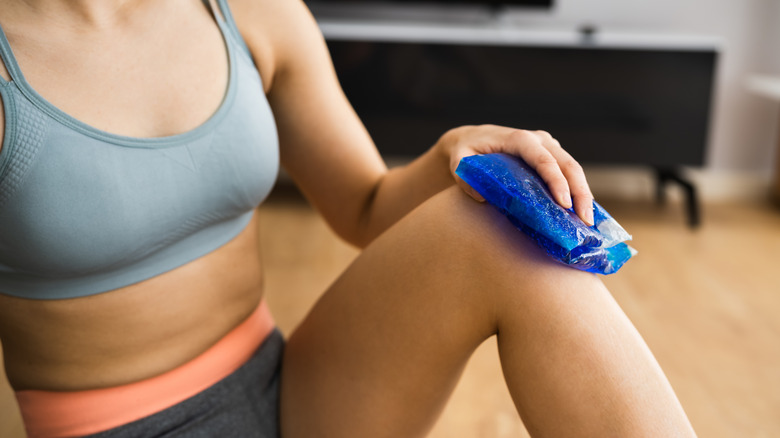How To Treat Sensitive Skin After Waxing
Most of us usually fall into one of two camps when it comes to hair removal: those who shave and those who wax. Shaving is easy and you can do it on your own in seconds but waxing has some benefits that shaving does not. For starters, waxing usually produces a better and smoother final result. Yet the biggest benefit is that when you wax, it takes much longer for hair to grow back, and when it does, it will grow back thinner (via Cleveland Clinic).
"Waxing removes hair from the root, causing damage to the hair follicle," esthetician Lorena de Olivera told MindBodyGreen. "So over time and with consistency, hair growth will become finer and patchy."
However, the biggest drawback with waxing, besides time and money, is that it's painful. When you wax off hair, you also take some skin with it. While that can be a great exfoliator, it can also cause redness and sensitivity.
Things that can happen after waxing
Most people notice red splotches after waxing. Some bumps appear about a week or so after the procedure while others notice bumps immediately.
The most common cause of post-wax irritation is folliculitis which is a bacterial skin infection often caused by inflammation (via Healthline). This looks like a rash with small raised red bumps and often resolves on its own, but if it persists or turns white, you may need further treatment. Any stray bumps that develop a week after waxing may be ingrown hairs forming under the skin.
Another cause of red bumps after waxing is contact dermatitis and it's usually caused by chemicals found in the wax or even the actual wax. With contact dermatitis, your skin has an allergic reaction to a substance that has touched it. According to Medical News Today, it may feel like a stinging sensation and feel like a burn or it can be itchy. Eventually, it may peel.
While these conditions are temporary and to be expected, there are things you can do to make the recovery process easier and less painful.
Ways to soothe irritated skin after waxing
What you do after waxing can help reduce sensitive skin. The first thing is to apply ice or cold packs (via Verywell Family). Ice helps reduce inflammation and swelling and will just feel food on tender skin. However, don't apply ice or cold packs directly to the skin which can be more painful. Add a few ice cubes to a baggie and wrap it in a thin towel and lay it on affected areas.
Healthline also recommends using hydrocortisone cream, aloe vera gel, and tea tree oil to soothe inflammation and also help curb itchiness and swelling.
When you shower, try to keep the water temperature lukewarm and avoid water that is too hot. Also, in the days after waxing, wear comfy clothes. It's best to choose cotton clothing that is loose and doesn't press against any of your tender areas.
Remember, if your skin gets worse or bleeds or oozes, see your doctor (via Byrdie). It's possible an infection may have developed.


